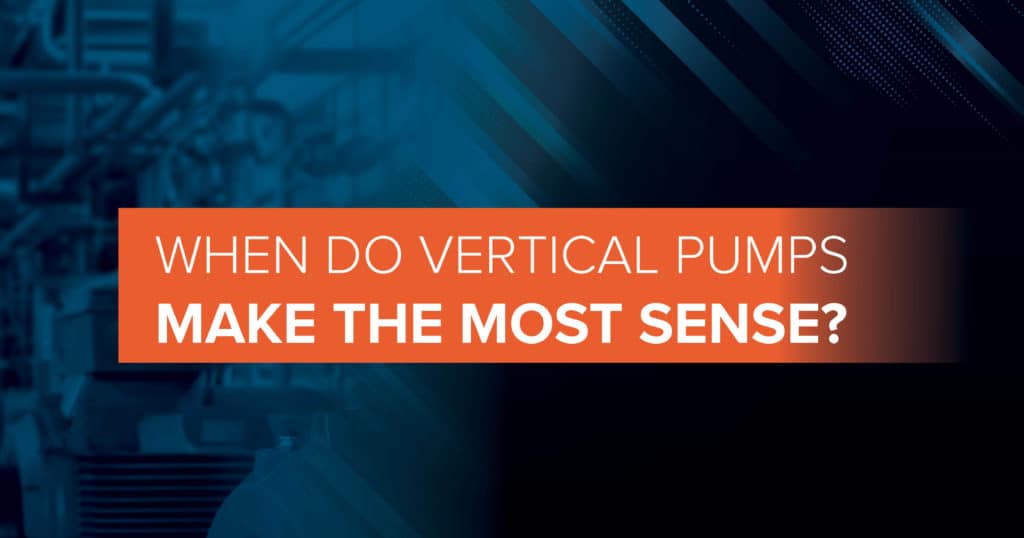Horizontal centrifugal pumps are used more commonly than vertical pumps. However, there are applications where a vertical pump will offer significant advantages over a horizontal configuration.
Vertical vs. Horizontal Pumps
Both styles of centrifugal pumps operate using similar engineering principals, yet there are specific differences that you will want to understand—along with some key pros and cons of each pump. First, let’s look at the key differences between vertical and horizontal pumps:
- Vertical—Vertical centrifugal pumps have a shaft that runs vertically to create vacuum pressure. The equipment will therefore have an overhang case or a radial-split design.
- Horizontal—Horizontal centrifugal pumps will typically have the shaft running horizontally, though there are more variations of horizontal designs. There are times when the shaft might be hung above or placed in between the bearing design.
Which is Better?
The pumping physics are going to be pretty similar between horizontal and vertical pumps. They both offer extremely efficient engineering and durability. The question we are asked all the time is if one is better than the other. The answer depends on the application at hand, the space you have for pump installation and your overall pump system configuration. Sometimes, a vertical pump just makes more sense than a horizontal one.
Pros and Cons of Vertical Pumps
On the pro side, a vertical pump will offer several key benefits. First of all, they require a much smaller footprint. If you have limited ground surface, then a vertical pump can save you a great deal of space. Vertical pumps also enable you to increase the net positive suction head (NPSH) in ways you may not be able to with a horizontal pump. In addition, vertical pumps work very efficiently when handling high-pressure fluids and high-temperature liquids.
There are some downsides to vertical pumps that you will need to consider, as well. They are a bit more difficult to install and maintain than horizontal pumps. Dialing in the vertical alignment is tricky (especially if you don’t have experience) and the components are generally less accessible for maintenance and repair. Horizontal pumps require less headroom, so if you are indoors with limited vertical space, then a vertical pump may not work. The spatial pros and cons essentially work both ways depending on your limitations. Horizontal pumps also offer more nozzle configuration options than most vertical pumps.
Choosing the Right Pump
So, when does a vertical pump make the most sense? You have to look at your operating space and your specific application, and then decide if a vertical pump will offer the configuration, efficiency and performance you require.
This is where DXP Pacific can help you make better pump purchasing and maintenance decisions. Our team is knowledgeable of all types of pumps and can help you select and configure the ideal pump system for your application and budget. Contact us today!

